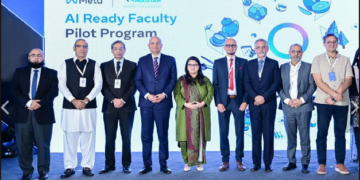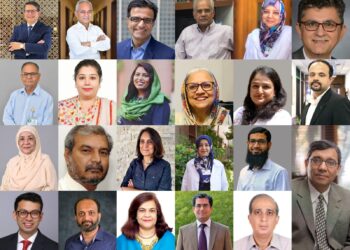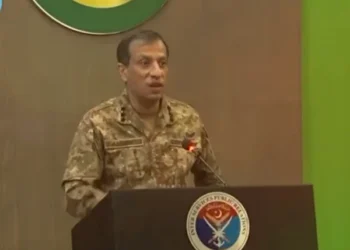In a significant development for Pakistan’s economic future, Deputy Prime Minister and Finance Minister Ishaq Dar has announced the successful conclusion of a historic agreement with the United States of America. The announcement was made in response to a social media post by former U.S. President Donald Trump, who also hinted at renewed cooperation between the two countries.
Ishaq Dar took to social media and proudly stated, “Alhamdulillah, Pakistan has reached a historic agreement with America.” He further emphasized that the new agreement will pave the way for expanded economic cooperation, strategic investment opportunities, and mutually beneficial collaboration, particularly in the energy sector.
A New Chapter in Pakistan-US Relations
The announcement marks a pivotal moment in the diplomatic and economic relations between Islamabad and Washington, signaling a shift toward mutual trust and renewed collaboration.
Historically, Pakistan and the United States have had a complex relationship that includes strategic military cooperation, trade, and aid partnerships. However, in recent years, tensions and misunderstandings had created distance. This new agreement symbolizes a revival and resetting of bilateral relations, focusing not just on geopolitical concerns but on economic stability, development, and investment.
Economic Diplomacy at the Forefront
Minister Ishaq Dar underlined that this success is the direct result of Pakistan’s ongoing strategy of economic diplomacy. He stated:
“The government of Pakistan has always prioritized economic diplomacy in the national interest, and this agreement is the result of this strategy.”
This approach underscores the country’s shift from dependency on loans and aid to building long-term partnerships based on trade, energy development, and foreign direct investment (FDI). Under the leadership of Prime Minister Shehbaz Sharif, Pakistan has focused on building confidence with global financial stakeholders, international investors, and trading partners.
Key Sectors Identified in the Agreement
Although full details of the agreement are expected to be released in the coming days, government sources have indicated that the deal encompasses cooperation across several crucial sectors. These include:
⚡ Energy Sector Collaboration
The agreement reportedly opens doors for joint energy ventures—including renewable energy projects such as solar, wind, and hydropower—as well as investments in Pakistan’s struggling power infrastructure. The U.S. is known for its technological leadership in clean energy, and Pakistan, which faces energy shortfalls and an over-reliance on expensive fossil fuels, stands to gain significantly.
🏗️ Infrastructure Development
Another major area of cooperation will be in infrastructure development, including transportation networks, urban development, and digital infrastructure. This aligns with Pakistan’s goal of revitalizing its domestic economy, creating jobs, and improving public services.
📦 Boosting Exports and Trade Facilitation
The agreement also focuses on expanding Pakistani exports to U.S. markets. This includes textiles, agriculture products, IT services, and manufacturing goods. Easing export barriers and promoting business-to-business collaboration are key components of the upcoming plans.
A Strategic Investment Opportunity
The renewed relationship between the two nations may also lead to increased foreign direct investment (FDI) from American firms. With global economic conditions shifting and supply chains diversifying post-COVID, Pakistan offers a strategic location, a large youth population, and untapped markets that are attractive for investors seeking new growth opportunities in South Asia.
In recent months, multiple American corporations have expressed interest in sectors such as:
- Information Technology (IT) and software development
- FinTech and digital payments
- E-commerce platforms
- Agritech and food security
The new agreement will likely formalize policy frameworks that facilitate smoother investment processes, ensure regulatory clarity, and provide protections for foreign businesses.
Political Leadership and Global Relevance
Ishaq Dar credited Prime Minister Shehbaz Sharif’s leadership as instrumental in restoring Pakistan’s position on the global stage:
“Thanks to the leadership of Prime Minister Shehbaz Sharif, Pakistan’s position on the global stage is once again becoming stable.”
This renewed global engagement comes at a time when Pakistan is actively seeking to broaden its diplomatic and economic alliances, not only with traditional partners like China and the Gulf States, but also with Western economies.
Under Shehbaz Sharif’s government, Pakistan has hosted and participated in several international forums aimed at attracting investment and rebuilding confidence in its economic trajectory.
U.S.-Pakistan Economic History: A Brief Overview
The United States has long been one of Pakistan’s most important international partners. Over the decades, economic ties between the two nations have included:
- Bilateral trade exceeding $6 billion annually in recent years.
- American investments in energy, telecommunications, and consumer goods sectors.
- U.S. support for IMF loan negotiations and debt relief initiatives.
- Educational and technological exchange programs.
Despite political ups and downs, the economic thread of the relationship has remained strong, and this new agreement appears to build upon that enduring partnership.
Implications for Pakistan’s Economy
With this agreement in place, Pakistan could be on the path to:
- Improved investor confidence
- Currency stabilization
- Export diversification
- Increased employment through foreign-backed projects
- Reduced energy shortages and more reliable power supply
Such outcomes would not only help reduce Pakistan’s reliance on international borrowing but also strengthen its capacity for self-sustained growth.
Moreover, increased U.S. engagement could bolster IMF negotiations, particularly if the agreement helps Pakistan improve its balance of payments and foreign reserves.
Reactions from the Business Community and Analysts
Initial responses from Pakistan’s business community have been largely optimistic. Industry leaders in textile manufacturing, energy, and tech startups view the announcement as a signal that stability is returning and that the global market is opening up to Pakistani enterprise.
Economists and policy experts are also weighing in, emphasizing that while the agreement is promising, its implementation and transparency will determine whether the benefits reach the broader population.
Next Steps: Awaiting Full Disclosure of Agreement Terms
While the government has confirmed that full details of the agreement will be revealed in the coming days, early indications suggest a comprehensive partnership built on:
- Long-term development goals
- Sector-specific investments
- Bilateral cooperation frameworks
- Transparent and accountable policy implementation
The public and media alike are eagerly awaiting further announcements, including memorandums of understanding (MoUs), investment commitments, and policy reforms that may follow.
Conclusion: A Turning Point for Pakistan’s Economic Future
Pakistan’s historic agreement with the United States could be a watershed moment for its economic revival. By fostering deeper ties with one of the world’s largest economies, Pakistan is taking a strategic step toward long-term stability, prosperity, and global relevance.
As Deputy Prime Minister Ishaq Dar affirmed, “Alhamdulillah, Pakistan is moving toward economic stability.” This sentiment reflects growing optimism across political, diplomatic, and economic circles that the country may be finally entering a new era of opportunity.

























